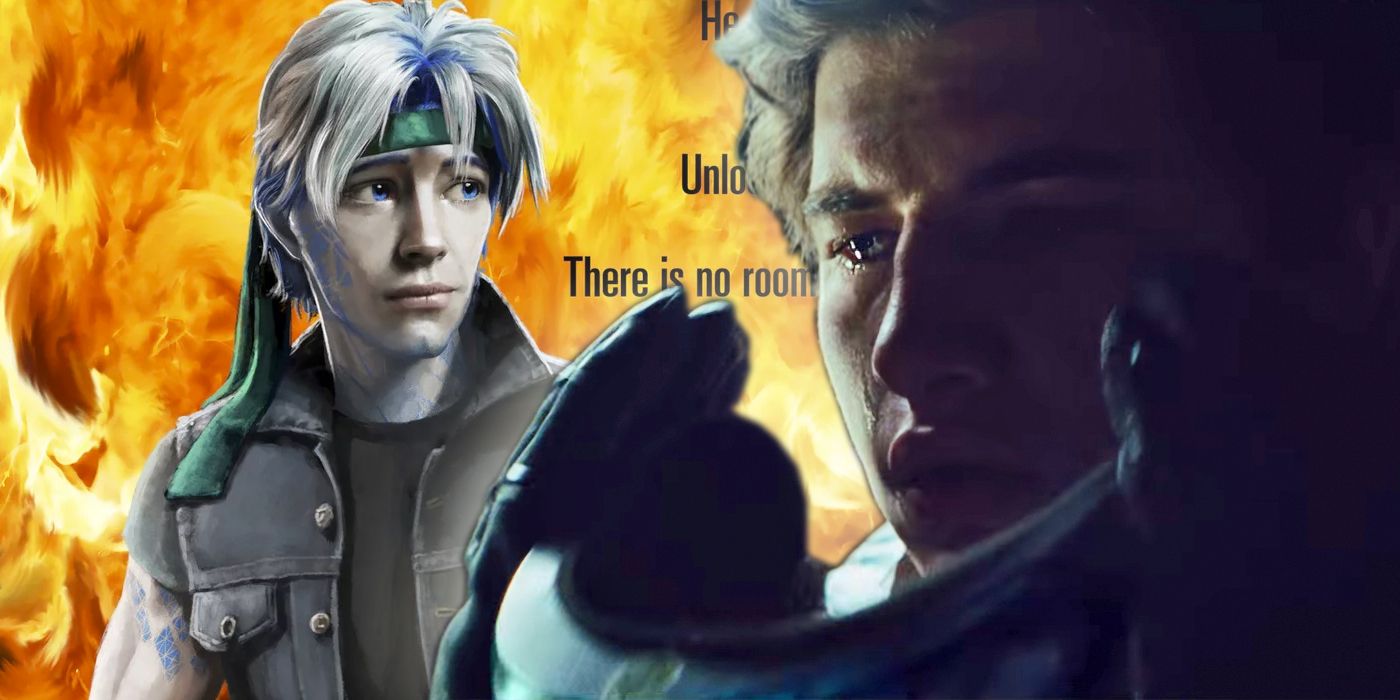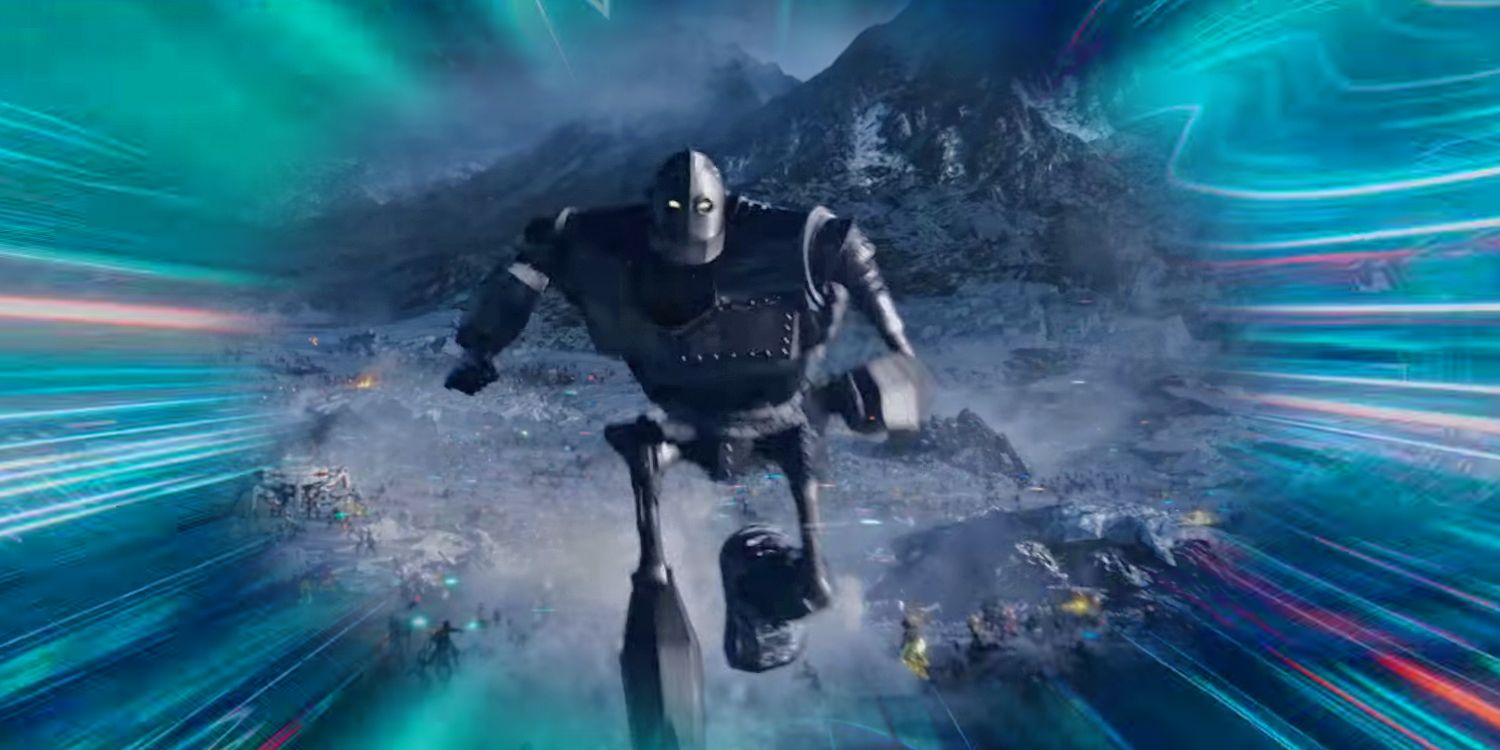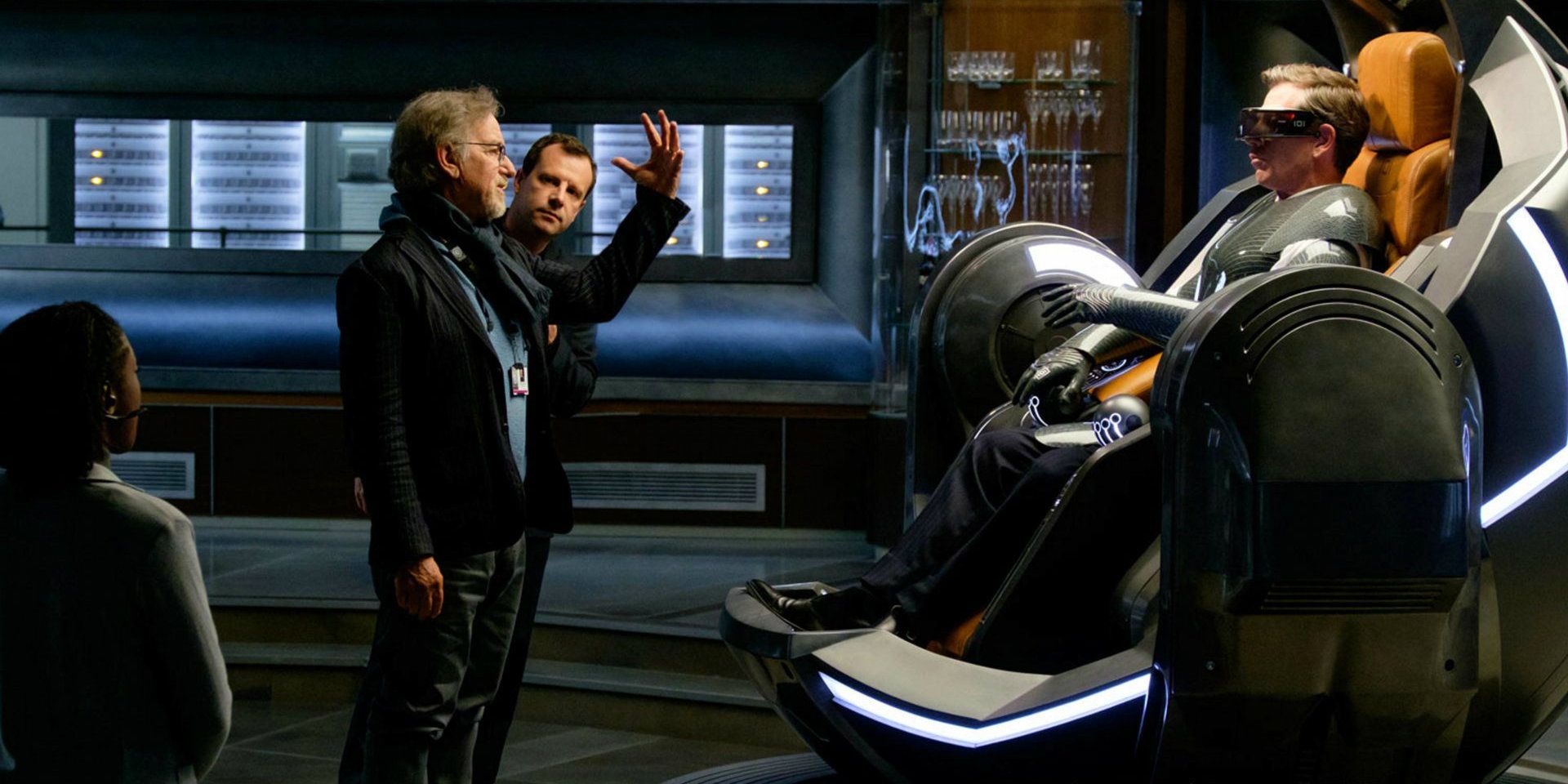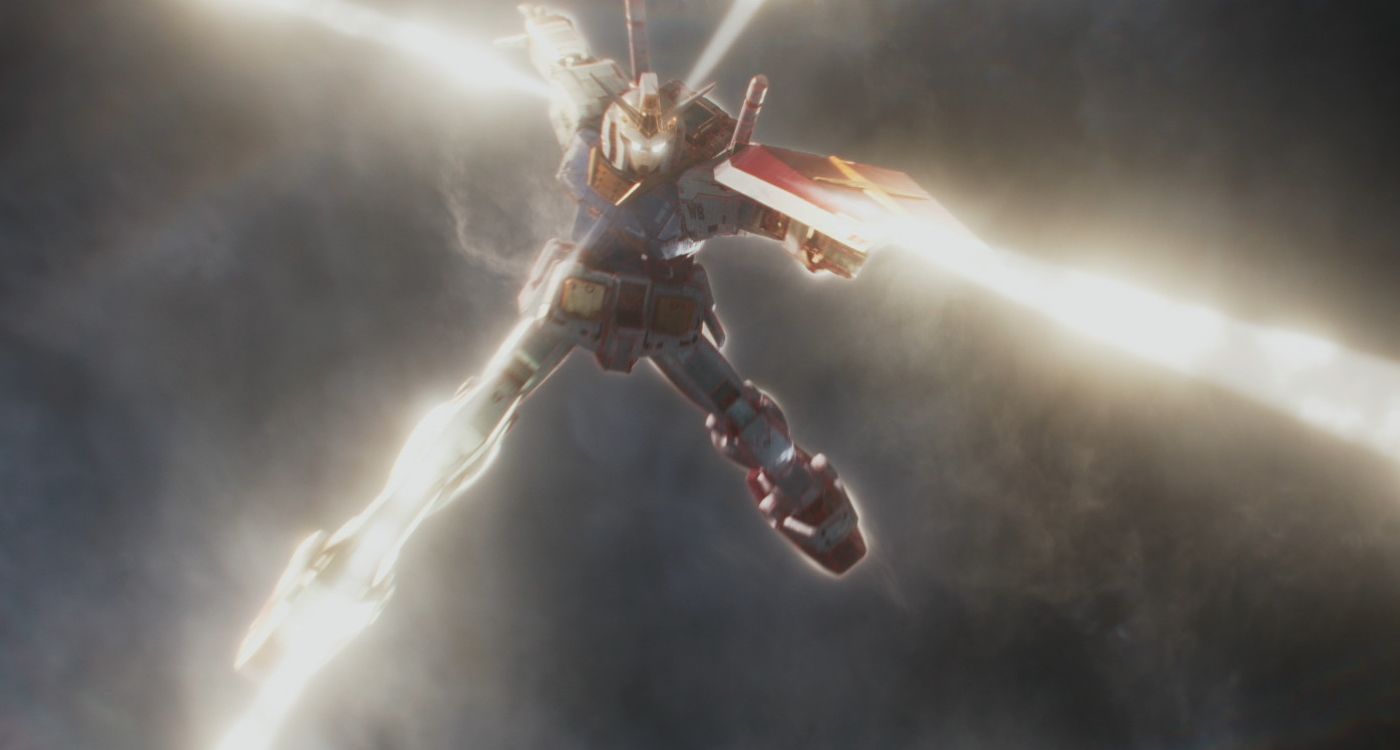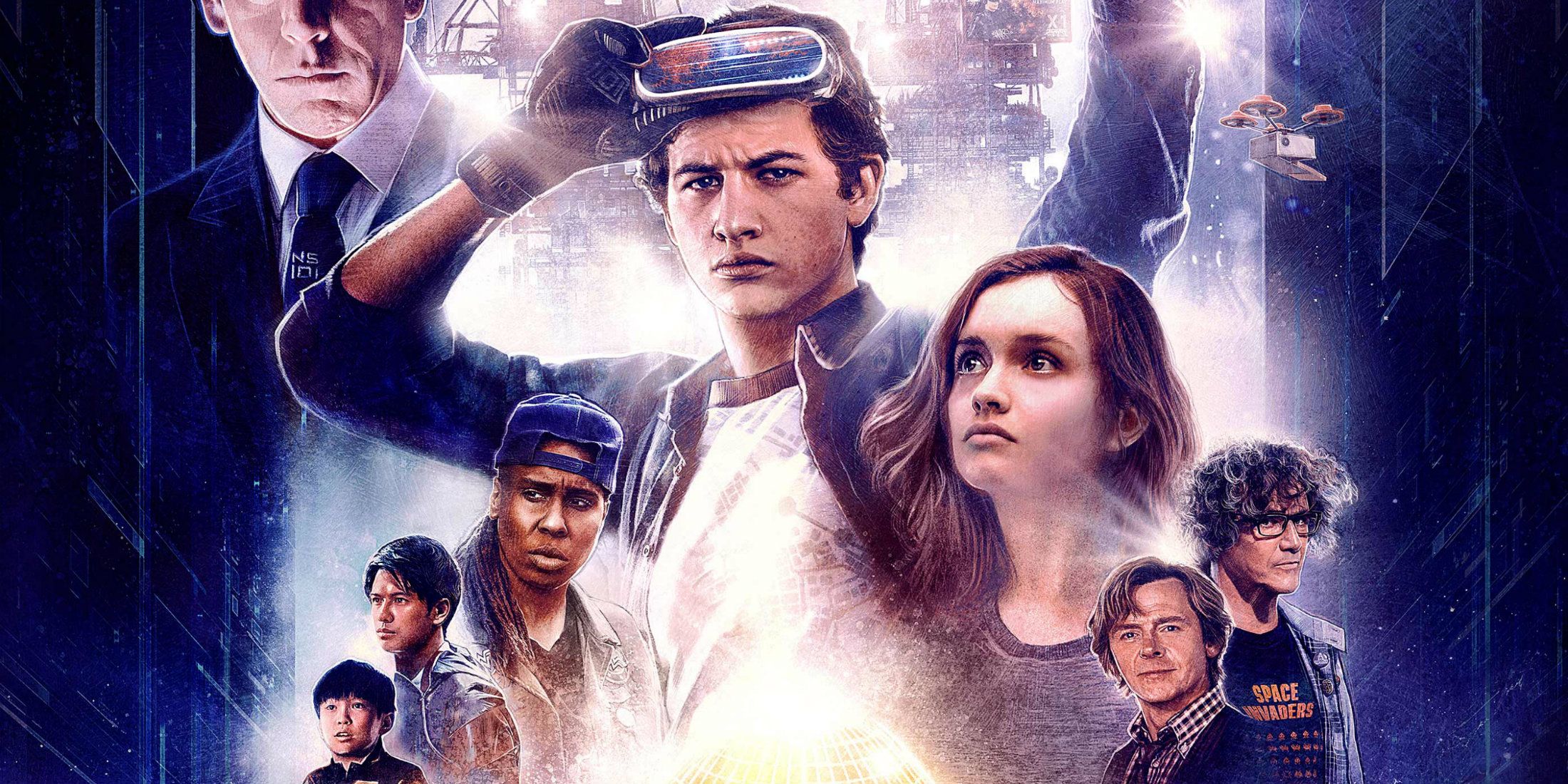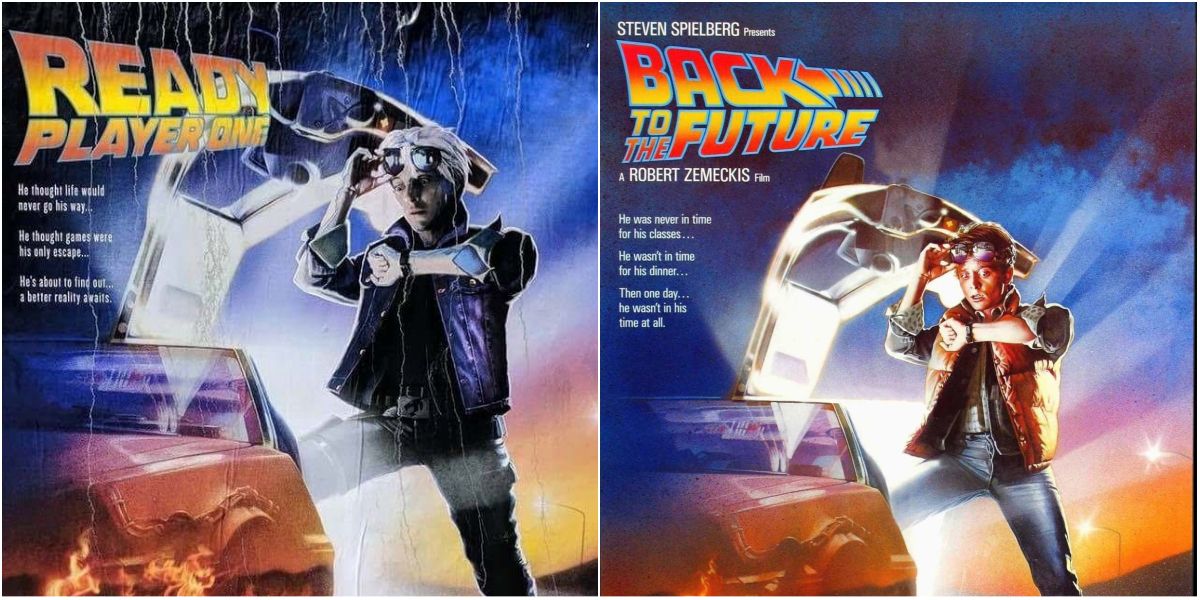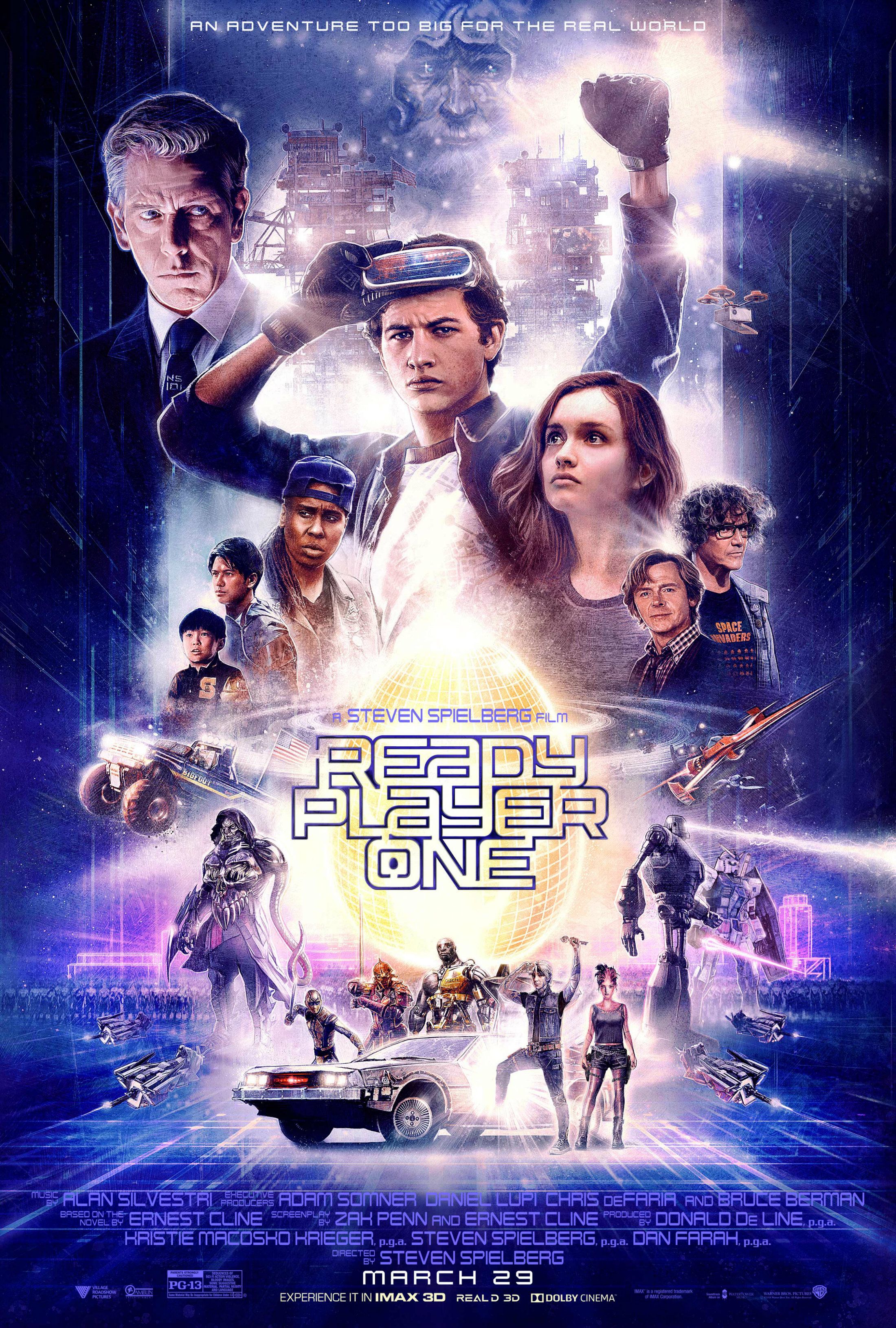It may only be March but Ready Player One is marking itself out as one of the most controversial films of 2018. Steven Spielberg's latest tentpole, based on Ernest Cline's 2011 novel, is one of Warner Bros. key releases of the year, and as a new property would typically be the cause of much excitement. However, you don't have to look hard to find a rather strong backlash against it.And, of course, that's because to call it a "new property" may be a bit of an overstatement. Set in 2044 middle America, Ready Player One imagines a future where the world has been driven to the brink by energy wars, global warming and overpopulation, so wiles away its time in an immersive virtual reality known as the Oasis where the only limit is imagination. And, because this is a "real future", those imagination limits center on pop culture: the film is a collage of iconic figures, from the overt Back to the Future Delorean as the ride of our hero who's close friends with the Iron Giant, to the Easter Egg strewn battlegrounds where Freddy Krueger and Chucky take on Spartans and Tracer.Related: Ready Player One: Every Trailer Cameo & Easter EggWith less than a month until release, Ready Player One is under the mainstream microscope, and the excitement levels are decidedly mixed: for every fan of the book awaiting a deserving adaptation, there's someone else shuddering at the thought of the movie. What's this all about? And is it totally fair?This Page: The Ready Player One Backlash
What Is The Ready Player One Backlash About?
The main crux of the negative buzz forReady Player One really seems to stem from the book. Ernest Cline's successful and acclaimed tome may be praised by some (including Warner Bros. in the trailers) as a "pop culture holy grail", but many others find it aggressively and baselessly touring in nostalgia, treating an ability to bathe in such throwbacks as something transcendent. Indeed, as the many snapshot pages that go viral on Twitter prove, it's often references for references' sake; a rundown of well-known geek and pop culture touchstones that build the suggestion that knowing more trivia and getting more in-jokes is true power.
The purpose is, of course, to build a metatextuality to this futuristic tale. Stories - be they in books, comics, films or on TV - that exist in a future without any cultural connection to our own can often feel unreal or false (and those with glancing choice references, often dictated by product placement or studio rights, can feel conversely forced), and that would be doubly true of one where the sci-fi method is a form escapism. The issue lies in how this aspect dominates Ready Player One.
And when it comes to the movie, the marketing wholeheartedly leaned into it. The San Diego Comic-Con trailer set up the Oasis, but then went deep into Easter Egg overdrive, throwing lots of CGI references at the screen without explaining to audiences why they should care. That's fine within the powder-keg of Hall H but doesn't play as well wide, and was doubly true when later trailers overwhelmed story beats with even more cameos and winks. The movie sold was an immensely faithful take on Cline's work, with all the sycophancy translated. Things have been exploded recently by a slew of one-sheets that photoshop the main characters into posters for the likes of Blade Runner, The Matrix, Labyrinth, Bullitt, The Lost Boys, among others, a move that only continue the rather baseless riffing.
Related: Ready Player One Needs To Be Better Than The Book
All of this makes for a strange cocktail of a movie, but the underlying problem with all this is more contextual. Ready Player One is typically viewed as being a white male fantasy, celebrating the sorts of geek landmarks that are dominated in the discussion by the typical, old-school nerd culture. That's inherent - if not all-encompassing - and while not immediately toxic, risks being that way, which is not very fitting of the modern climate; the film comes out in the same month as A Wrinkle In Time, Tomb Raider and Pacific Rim Uprising, each of which features a female or person of color lead (or, in the former case, both). Ready Player One isn't just bathing in the past, it's doing so against the grain of progression. It's not just the methodology, it's what it represents.
Now, nothing about these readings is exactly wrong, but isn't quite fair to so prematurely tarnish the film.
The Ready Player One Backlash Forgets Steven Spielberg
Steven Spielberg has two Best Director Oscars from seven nominations, six movies in the IMDb Top 250 and an astonishing batting average of 28 Fresh movies out of 31 on Rotten Tomatoes. His movies have, to date, made $9.5 billion worldwide. But, going past the stats, the filmography speaks for itself: Jaws, Raiders of the Lost Ark, E.T., My Left Foot, Jurassic Park, Schindler's List (the last two made in the same year), Saving Private Ryan are all bona fide classics, and that's discounting his work for the past 20 years. And yet despite his latest - The Post, a pertinent takedown of the current political and media climate - getting a Best Picture nomination, there is conflicted excitement for his next film. Ready Player One's backlash seems to be dwarfing the legacy of one of the greatest American filmmakers of all time.
That is a pretty big U-turn for film culture, one that seems to ignore not only the consistent pedigree of Spielberg - perhaps his biggest fault in recent years is having such a lauded back catalog his newer movies can never live up to them - but how suitable he is for Ready Player One. From the early days of his career, Spielberg has been tackling throwbacks; initially to the American Dream of the 1950s, later the serials of the 1940s, now the eras he came of age in. And whether it's E.T., Raiders, or Bridge of Spies, each one shows an astute understanding of not just what that inspiration is, but how to filter its presentation on film.
Related: Ready Player One Trailer: Every Reference & Cameo
As someone who had a hand in so much of what Ready Player One calls out - or at least inspired it - he obviously is tuned into the fabric of the story, but this throwback facet shows he can offer more insight. After all, where his imbuing of depth alongside spectacle is most striking is in his literary adaptations: with Jaws and Jurassic Park, he doesn't simply recapture what Peter Benchley or Michael Crichton wrote, nor shoot a well-adapted screenplay, but expands it, adding greater depth and commentary.
Steven Spielberg Could Elevate Ready Player One
Unlike what one of his descendants may risk doing, Spielberg is unlikely to blindly translate Ready Player One. He's too involved in the topic to so be so egotistical and too astute as a filmmaker to allow that. In the featurettes on the film, he's discussed making changes to Ready Player One's story, to the point that Ben Mendelsohn's character is a completely different beast. What exactly is going on hasn't been divulged, but this isn't a straight adaptation.
It's been repeatedly suggested that he may do something similar to Paul Verhoeven with Starship Troopers - which took Robert A. Heinlein's right-wing doctrine and made it a blunt deconstruction of propaganda pieces - and use Ready Player One to make a treatise warning against heavy nostalgia. Having these long-past cultural touchstones is important, but without ingenuity we risk spiraling into a negative cycle of endless regurgitation. This is a common cautionary tale made against modern Hollywood and the sort of thing an innovator like Spielberg would be wary of. More importantly, this is certainly the right story for that.
For the uninitiated, the plot of Ready Player One involves every-teenager Wade Watts (played by Tye Sheridan) becoming involved a real-life-or-death fight for the world's future after the Oasis' creator leaves behind his fortune behind a hunt for the ultimate Easter Egg: ownership of the realm. We have a dystopian world locked into its own obsessions with the past learning to break free and gain their own identity; that's only a few steps from a critique of what the Ready Player One backlash believes the book and film to trading in. We don't know if this is where Spielberg's actually taken the film, but his presence and promise stands above many of the novel's inherent issues.
Ready Player One's Marketing Is Flawed
That's not to say there haven't been problems with Ready Player One and how it's entered the live-action world. The marketing is indeed problematic, the trailer focus actively hiding the heart of the story (both tonally and narratively); it's only in the past month or so that it's actually started promising more than Easter Egg: The Movie. Thankfully, though, the balance between story and nostalgia flavor is getting more balanced now, the use of those references more creative - the symphonic remix of Aha's "Take on Me" is sure to be heavily played after release - and the bigger picture more cohesive.
Related: Warner Bros. Have Been Marketing Ready Player One All Wrong
It's easy to assume that the studio were confronted with this adaptation of nerd literature and weren't quite sure how to sell it. The plot setup is nothing groundbreaking, and its character interactions hinging on the explanation of a whole new world. The easiest angle is thus to push the Easter Eggs and references, because that sort of recognizable sales tactics is how most movies feel to be greenlit. It's obviously flawed but also the safest option, and may not be totally representative of the finished film
The Posters Aren't A Problem
Which brings us to the recent posters. They've become the center of the anti-Ready Player One mood, perhaps because they're tangibly linked to just the movie and thus evidence of something wrong beyond the book. However, that misunderstands the purpose; they fit the prior narrative, but only from a certain point of view. These aren't the primary posters - they've already released with their own, long-leg-based issues - or even character one-sheets; they're viral marketing, intended to draw attention online (although they've been spotted in the wild, that appears to be centered mainly in key markets), and while the quality of the Photoshop is debatable, they do that job.
But the controversy around this aspect misses that they're nothing groundbreaking. This type of marketing is incredibly common, especially in animation where characters can be put in any required pose: just last week, Zootopia created tie-in posters for the Oscars, while Sherlock Gnomes's marketing hinged on riffing on recent releases. Deadpool did it. The Muppets did it (albeit with trailers). In all these cases it's more instinctively parodic, but the affection coming from them is the same with Ready Player One: it's only toxic if it's being read with a negative view of the intent.
This is seen best by contrasting to the biggest poster lift ever: The Empire Strikes Back's main poster is unavoidably inspired by Gone With The Wind, with Han and Leia embracing just like Clark Gable and Vivien Leigh. It was a new artwork, granted, but the inspiration aspect is unavoidably similar; Empire came out forty years on from Gone With The Wind, a comparable time period to that between Ready Player One and most of the movies it's riffing on. That likely caused cinephiles to turn up their noses at the time, yet as Star Wars was evoking 1930s Buck Rogers serials it broadly fits for the sequel to lift from other classics. When you consider that purpose, there's little difference between that choice and Ready Player One picking up Bullitt.
-
A lack of anticipation for a project is no crime, but an active dislike of a movie months in advance that ignores so much of its context is hardly fair. There's no guarantee it will live up to the heights of prime Spielberg, but there's conversely not anything beyond some strange marketing choices to suggest it's going to crash and burn either. If any movie is worthy of the benefit of the doubt, it's Ready Player One.
Next: 2018 Spring Movies The 15 Films to See

